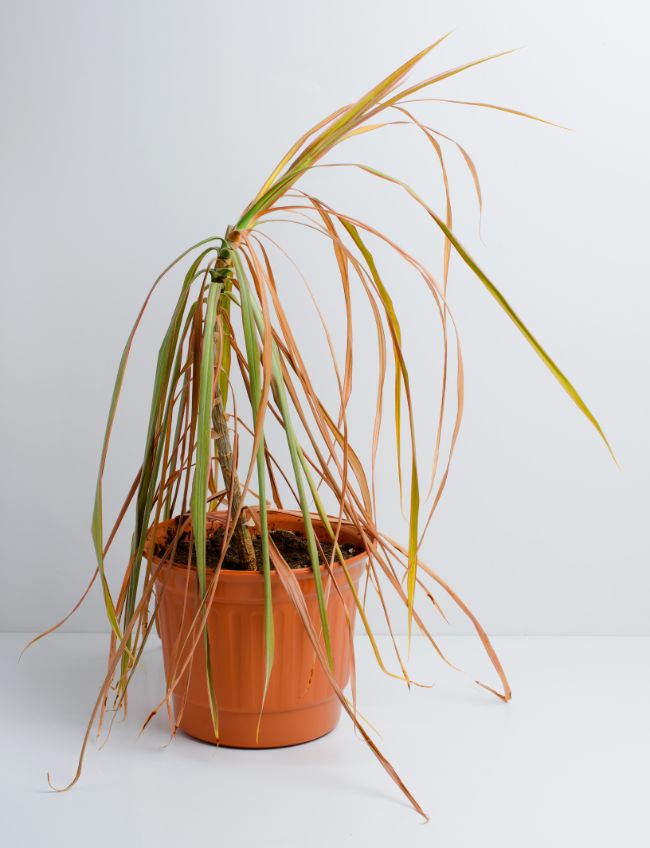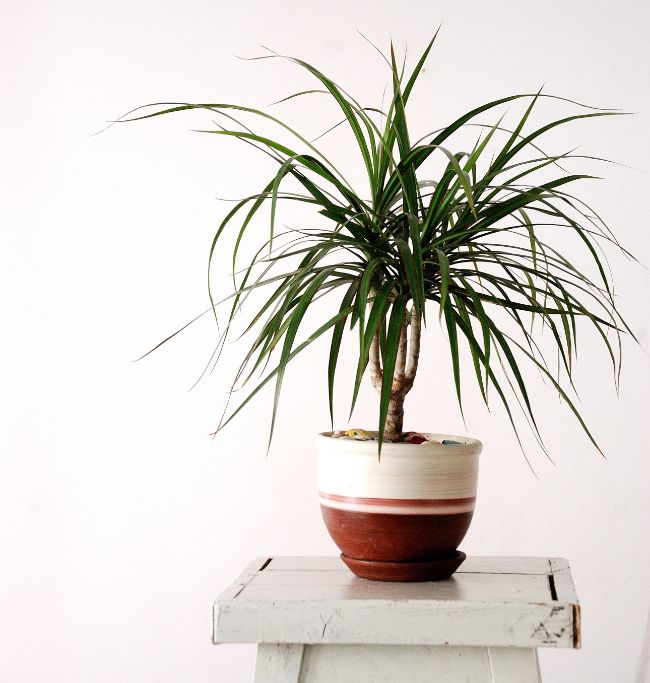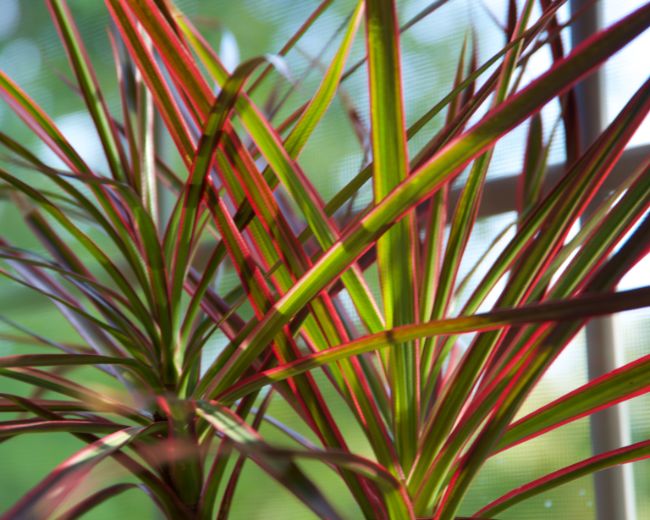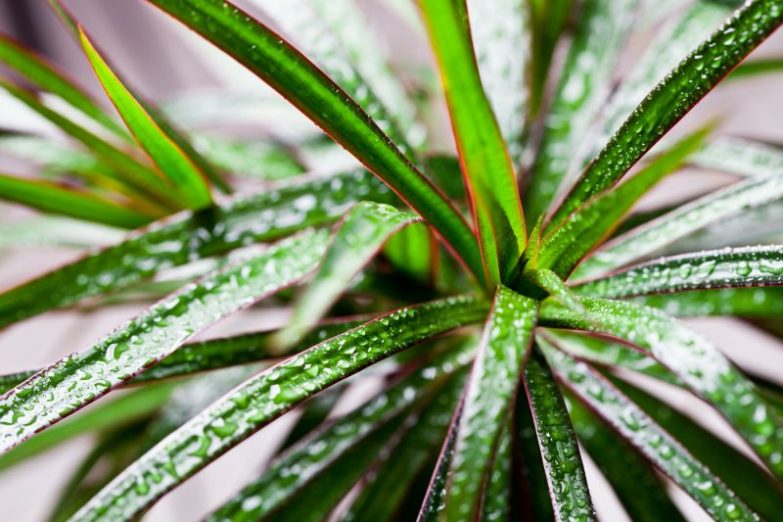The Madagascar Dragon Tree (Dracaena marginata) is one of my favorite houseplants. It offers a wonderful combination of reliability and strong architectural form. Like all houseplants, there are a few things that can go wrong but they are almost always easy to correct. So if it looks like your Madagascar Dragon tree is dying, this article will help get your plant back to perfect health.
The most likely causes of a Madagascar Dragon Tree dying are overwatering and insufficient lighting. Underwatering, excess light, fertilizer problems, overpotting, low humidity, pests, or disease can also cause problems. Identifying the issue will help you restore your plant to health.
Why Is My Madagascar Dragon Tree Dying?
The name of this plant is probably a bit of a give away when it comes to identifying its country of origin. Knowing what sort of region the plant evolved in is always a big help when it comes to replicating growing conditions.
Unfortunately, Madagascar is a diverse country with a wide range of climatic and environmental conditions so you need to tread carefully here. In fact, the Dragon Tree is from the forested regions of that country and this tells us that the plant will not tolerate direct sunlight.
Too Much Light
Your Dragon Tree will thrive in bright light, but even a modest amount of direct sun is enough to make the leaves wilt and turn brown. Browning normally starts with the tips and edges of the leaves, but will eventually affect whole leaves. Soon after that, they will drop off if the plant is not moved to a less sunny position.
Even in a worst-case scenario where your plant does start to lose leaves, it will probably recover if you move it to a more shaded spot. Many of the reserves it requires to survive are held in those long elegant stems. Although it may take some time, the plant should start to shoot new leaves.
Too Little Light
Too little light can also pose problems, but on a far less dramatic scale. Many dragon plants have a pink or white margin along the edges of their leaves. If the plant feels it is not getting enough light it will lose that color and the leaves will become green throughout. Indoors it is usually possible to find a spot that offers bright light but does not actually get hit by the sun.
Low light conditions will cause your Madagascar Dragon Tree to grow more slowly and it will look increasingly sparse and stretched as time goes on. ow lighting will increase the risk of overwatering problems and can make the plant more susceptible to pests and diseases, which can easily kill it.
Read this article to work out where to place your houseplants to give them the perfect amount of light to help them thrive.

Watering
If the lighting is correct and your plant is showing signs of stress then it is very likely to be a watering issue. Most houseplants, especially those that originate in tropical or subtropical regions like their soil to be moist but not wet.
One of the most common reasons these plants become stressed is that well-intentioned owners think that more water means happier house plants. That is seldom the case.
Your Dragon Tree can actually tolerate quite dry conditions when compared to many other house plants. That is down to the fact that it can store a certain amount of water in those pithy stems. Don’t be afraid to let the plant dry out slightly between waterings.
You can check this by feel. If the top inch of the potting soil is dry then the plant is probably in need of water. Give it a thorough soaking so that water starts to come out of the holes in the base of the pot and then allow it to dry out again. Don’t leave the plant standing in a saucer of water.
Watering Frequency
You will need to water more frequently in summer than in winter, as the plant will be growing more quickly and warmer conditions will result in more evaporation. Water requirements will vary depending on the size of the plant in relation to its pot, the pot material, as well as the underlying temperature and humidity level.
Learn to rely on feeling the top inch of soil and over time you will become far more adept at judging the moisture content. Read my guide to watering houseplants for more helpful watering tips.
Both over and under watering can lead to drooping leaves. The difference is that if the excess relates to too little water, the leaves will become dry and brittle. If it is a result of too much water, the leaves will become soggy and limp, and root rot is much more likely. Overwatering is much more serious to the long term health of your plant.
Fertilizer Problems
Fertilizer problems are much more likely to be related to excess fertilizer than insufficient fertilizer. If you feed your plant on a regular basis, fertilizer salts can build up in the soil, physically damaging the roots, preventing water absorption into the plant and adversely affecting the pH of the soil.
If your Madagascar Dragon Tree is wilting and developing brown leaf tips and edges, look for signs of fertilizer salt build-up on the surface fo the soil. Stop fertilizing and flush the soil thoroughly with water to help wash out excess fertilizer. Consider repotting your plant into fresh soil, but only as a last resort, as this can cause additional stress for the plant.
A well-balanced general-purpose liquid house plant food is all that these plants require. They are slow-growing so you will only need to feed them once a month or less during the summer months and you can stop feeding them altogether over the dormant winter season.
Fertilize cautiously by diluting the fertilizer to half the recommended strength. It is better to give your plant a little fertilizer on a regular schedule than a lot of fertilizer infrequently. Read my guide to fertilizing houseplants to make sure you get this important aspect of houseplant care just right.
Humidity
Low humidity can be a problem in homes that use air conditioning, or in the winter when central heating dries the air while providing us with warmth.
Low humidity will cause your plant to dry out faster and it can get brown leaf tips and edges. Although it won’t kill your plant, it can spoil the good looks of your Madagascar Dragon Tree.
Here are some good tips to boost the humidity level in your home:
- Keep the plant standing in a dish of water and pebbles. The bottom of the pot should be standing on the pebbles rather than in the water itself. Evaporation of the water will increase local humidity levels.
- Group your houseplants together, s that the collective transpiration raised the humidity level for all your plants.
- Use a humidifier to quickly and easily raise the humidity in your home.
- Get a digital humidity meter to monitor the humidity levels. I find this so useful to see what the humidity range is in my home, allowing me to adjust as necessary.

Overpotting
One thing that may affect the moisture retention of the potting soil is that the plant may have been overpotted or have outgrown its existing pot. Overpotting occurs when the plant is placed in a pot that is far bigger than the root ball. The excess potting mix absorbs lots of water and the plant becomes waterlogged, leading to root rot.
This is a really common cause of a Madagascar Dragon Tree dying, as you can cause root rot while actually watering your plant very infrequently. Appropriately sized pots are crucial for most houseplants, particularly Madagascar Dragon Trees, which hate to be overwatered.
Repotting
If the plant is getting too big for its pot, the root ball will fill the pot and there will be little room for soil. Without soil to retain moisture, the water will just flow right through the pot without feeding the plant. Over time your Madagascar Dragon Tree will languish, becoming less and less vibrant and healthy over time.
Repot the plant into a pot that is slightly larger than its current home using a general-purpose houseplant mix. Mixing in 1/3 perlite will greatly increase drainage and will prevent a lot of overwatering issues.
Pests
If your plant starts to look unhappy it is most likely to be due to one of the reasons I have already mentioned. Like all house plants, these guys are vulnerable to attacks from mealybugs, spider mites, or scale insects. Usually, these pests will attack a plant because it has been weakened by other environmental problems and it is unlikely to be the pest itself that is the cause of your Madagascar Dragon Tree dying.
Vigilance
The first and most important defense against pests is vigilance. These guys don’t just appear overnight. They build up gradually over time and they cannot do this if you are dedicated to inspecting your plants frequently.
That said, they are experts at hiding so you won’t spot them with just a casual glance. You will need to peer closely into leaf joints and under leaves to make sure they are not clandestinely building up their forces.
If you spot them early then you can probably just blast them away with a jet of water or wipe them off with a damp cloth. If they have become more established than that, then you might need greater fire power.
Neem oil diluted with ninety-five percent water can be sprayed onto the plant and should soon resolve any infestations. Remember, however, they were probably there because the plant was stressed and that issue will need to be addressed. A healthy plant is far better able to defend itself against pests.

General Maintenance
What makes the Dragon Tree so eye catching is the architectural shape of those long grey-brown stems. These plants are actually trees, and though you might have bought your plant as something to place on the end of your desk, given time they can grow into really impressive indoor trees that will reach the ceiling.
Gentle Pruning
You will need to keep the plant looking at its best and to do this the leaves need to be kept clean and excess or yellowing leaves should be removed. I like to limit my plants’ foliage to the very top of the stems and I pull off unhealthy leaves or those that are growing too low down the stem.
This is simply a matter of holding the leaf at its base, between thumb and forefinger, and then tugging downwards towards the base of the plant. Don’t pull the leaf vertically away from the plant as this risks damaging the stems. Pulling downwards, the leaves come away easily and the plant suffers no ill effects. With this sort of cosmetic pruning, the plant always looks like it is in peak condition.
Temperature
In house plant terms, dragon plants are fairly undemanding when it comes to temperature. Obviously, they won’t like things to become too cold, given their heritage, but they can cope with most household conditions otherwise. Don’t place them in a direct draught but they won’t curl up their toes and die on you if they get touched by the occasional breeze.
How To Stop Your Madagascar Dragon Tree Dying
If it looks like your Madagascar Dragon Tree is dying, it is usually related to a problem with its care. Watering and lighting problems are by far the most common issues, so think about these first. Examine your plant, the soil, and conditions closely, as there will be multiple clues that can help you work out what the problem is. Read my article on general Madagascar Dragon Tree care for information about all aspects of growing a healthy plant.

